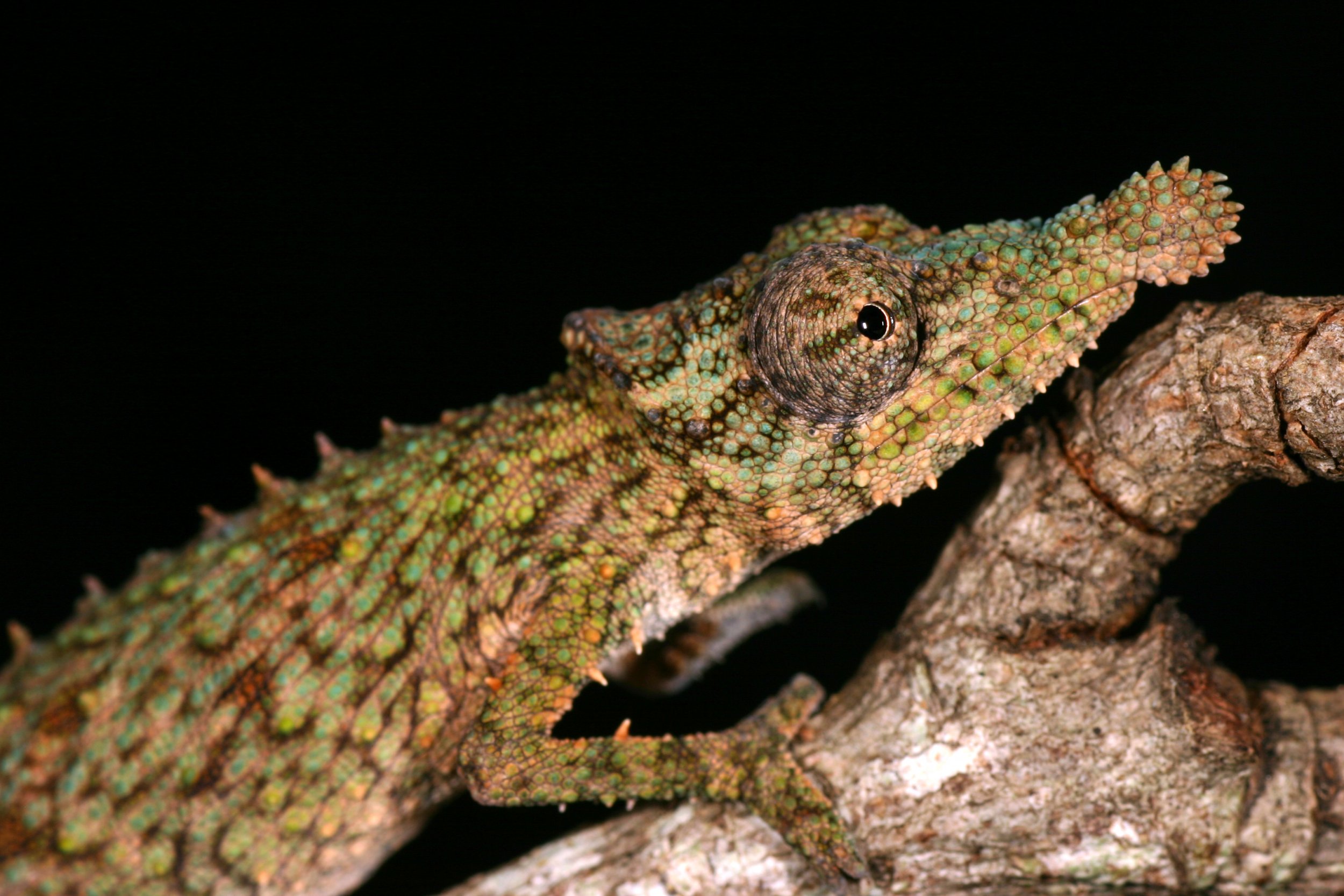It’s only a couple of inches long, just about big enough to perch comfortably on your thumb, but the rosette-nosed chameleon proves fast things come in small packages. The little lizard is the proud owner of a super-speedy tongue. If you think of its tongue as a muscle car, it would go from 0 to 60 miles per hour in just a hundredth of a second.
watch the video below.

These record-breaking measurements derived from a single rosette-nosed chameleon (Rhampholeon spinosus), an endangered species found in the mountains of Tanzania that measures 2 inches in length but which catapults it tongue 2.5 body lengths. In human terms, if Michael Jordan had this ability, he could easily snag a grasshopper from off the basketball rim with his tongue while standing at the free-throw line.
Rosette Nosed Chameleon.
The rosette-nosed chameleon (Rhampholeon spinosus) hunts prey with its super-speedy tongue in the forests of Tanzania’s Usambara

Chameleons are famous for their long, ballistic tongues, which can shoot out and snatch prey faster than your eye can follow. But Christopher Anderson, a researcher from Brown University, wanted to know just how fast is fast.

Image: The Rhampholeon spinosus chameleon was the study’s tiny.
To test the upper limits of chameleon tongue skills, he grabbed a high-speed camera that shoots 3,000 frames a second, gathered up representatives from 20 different chameleon species (big and small), and then headed for the lab. To get his test subjects to perform, he dangled crickets within a tantalising distance and waited for the infamous strike.
This is the fastest bodily movement of any bird, reptile or mammal, Anderson says. It is also the most powerful movement (as measured by the amount of work done in a given amount of time) of any of these creatures. Anderson calculated chameleon tongues expend more than 14,000 watts of energy per kilogram, which is roughly 14 times more work than any animal muscle is capable of.
In fact, the chameleon tongue’s rapidity and power has nothing to do with muscles. Instead, the creature uses special elastic collagen fibers to build up and store energy, which is then released in an instant. The setup is quite similar to a bow and arrow, Anderson explains.
So how did the chameleons fare? It was the smaller subjects that packed the most powerful punch. “Smaller species have higher performance than larger species,” says Anderson in a press release. The smaller the chameleon, he found, the more powerful and speedy the strike – and the greater the distance the tongue could extend relative to body size.
In the case of the rosette-nosed chameleon (Rhampholeon spinosus), a species native to the forests of Tanzania’s Usambara Mountains, the tongue shoots out 2.5 times the lizard’s body length. Getting lunch? All it needs is 20 milliseconds.
video .
All of this makes perfect evolutionary sense, of course. When you don’t have size on your side, a lethally efficient tongue is a lifesaver. Relative to body size, smaller animals need more energy to survive, and a tongue that shoots out faster and farther ensures even tiny chameleons get all the tasty crickets they need to stay alive.
Anderson’s findings were published this week in Scientific Reports.